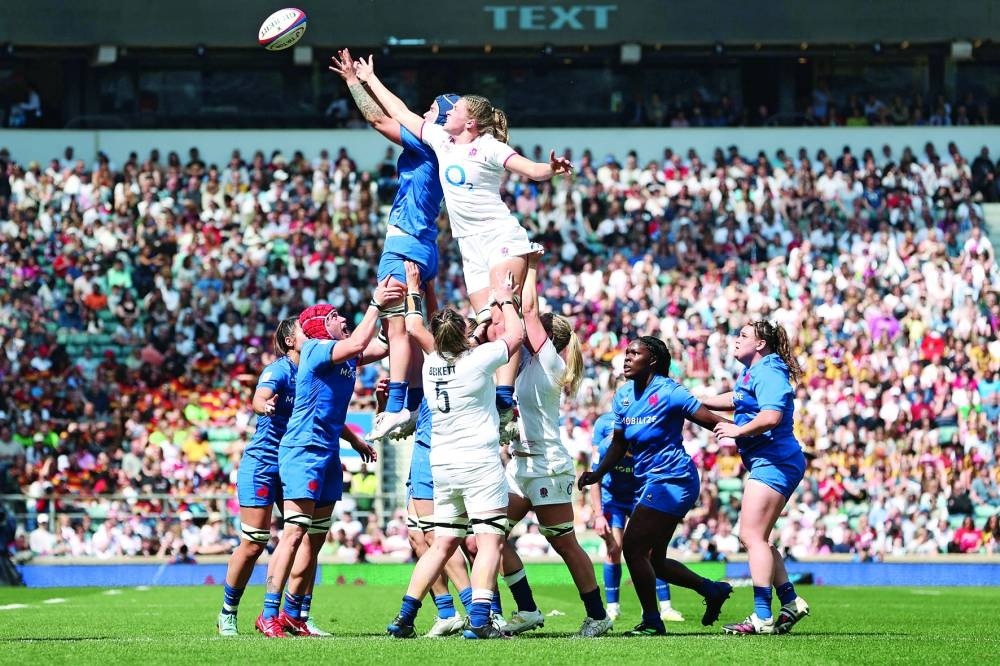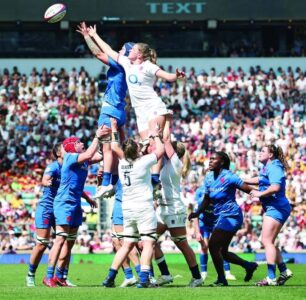Lineouts in rugby are set-piece plays occurring when the ball goes out of bounds. Teams aim to secure possession or disrupt the opponent’s throw, offering strategic opportunities for gaining an advantage.
Discover the mechanics and tactics of lineouts in rugby, including strategies for securing possession and disrupting the opponent’s throw, crucial for gaining an advantage in the game.
Lineout FAQ
- Lineout Strategy
- Attacking Lineout Moves
- Can a player fake a throw during a lineout?
- Can a team fake a lineout and opt for another set piece?
No. Once a team has decided on any response to a penalty or infringement, they cannot change this decision, unless the Referee confirms a change in ciurcumstances, for example the lineout should actually be taken from a position other than that originally indicate
- Can a team opt not to contest a lineout?
Yes, a team can opt not to contest a lineout if they believe it’s strategically advantageous to do so. This decision may be based on factors such as field position, player positioning, and the opposition’s strengths. Howerver, they need to form up for the lineout.
- Can players be lifted before the ball is thrown in a lineout?
No, The players cannot be lifted before the ball has left the Hookers hands, but are allowed to move.
- Can players from the opposing team contest the lineout throw?
Yes, players from the opposing team can contest the lineout throw by jumping to try and intercept or disrupt the ball’s trajectory. However, they must do so without infringing on the rules governing fair play and player safety.
- Can players jump from the lineout without being lifted?
Yes, players can jump from the lineout without being lifted. This technique is typically employed by taller or more athletic players who can out-jump their opponents to secure possession or disrupt the opposition’s lineout play.
- Can the ball be thrown directly into the opponent's half from a lineout?
No, the ball cannot be thrown directly into the opponent’s half from a lineout. It must travel at least five meters towards the throwing team’s own goal line before being played, ensuring that both teams have a fair chance to contest possession.
- Defensive Lineout Moves
Defensive lineout moves involve strategies employed by a team to disrupt the opposition’s lineout plays, regain possession, or prevent them from executing their attacking strategies effectively.
- How does the team coordinate their movements during a lineout?
The team coordinates their movements during a lineout through pre-planned plays, signals, and communication among players. Each player has a specific role to play, whether it’s lifting, jumping, or supporting, to execute the strategy successfully.
- What are the tactics involved in a lineout?
Tactics involved in a lineout include varying throwing angles, timing, and player positioning to outsmart the opposition, secure possession, and create attacking opportunities. It also involves adapting to the opponent’s tactics and reacting accordingly.
- What is a quick throw-in after a lineout?
- What is the purpose of lifting in a lineout?
The purpose of lifting in a lineout is to elevate a player vertically so they can contest for the thrown ball, either to secure possession for their team or to disrupt the opposition’s lineout play. It requires precision, timing, and teamwork.
- Why do rugby players have tape and padding on their thighs?
Rugby players use tape and padding on their thighs to help other players lift them more easily in lineouts and restarts
- Lineout Rules
- What is a sack in a lineout?
- How are free kicks or penalties awarded during a lineout handled?
- Are players allowed to be offside during a lineout?
- Are there any restrictions on lifting players in a lineout?
- Are there any specific rules about player positioning in a lineout?
- Are there specific rules for players in the lineout compared to other phases of play?
Yes, during a lineout, players have specific roles such as lifting, jumping, or supporting, which differ from their roles in other phases of play like scrums or rucks.
- How far does the ball need to travel in a lineout throw?
The ball must travel at least 5 meters horizontally from the line of touch during a lineout throw to be considered legal.
- How is a rugby lineout formed?
A lineout is formed when the ball goes out of bounds, and both teams line up perpendicular to the touchline. The team that didn’t touch the ball last throws it into the lineout.
- How is the team awarded a lineout?
- Is obstruction allowed during a lineout?
No, obstruction is not allowed during a lineout. Players must not obstruct opponents or interfere with their ability to compete for the ball.
- Can you be offside at a lineout?
- What happens if the ball doesn't travel the required distance during the lineout throw?
- Lineout Positions
- Can any player participate in a lineout?
- Can anyone throw into the lineout?
No, only designated players, typically known as “lineout throwers,” can legally throw the ball into the lineout. These players are usually skilled at making accurate throws under pressure and are trained specifically for this role.
- Hooker's role at lineout
- How is the throwing-in player determined?
- What does lineout caller mean?
- What does lineout jumper mean?
A lineout jumper is a player who specializes in leaping to catch the thrown ball during a lineout. They are often tall, agile, and have good timing, allowing them to outmaneuver opponents and secure possession for their team.
- What does lineout lifter mean?
A lineout lifter is a player responsible for lifting a teammate into the air during a lineout to help them reach higher and potentially secure possession of the ball. Lifters require strength, coordination, and timing to execute lifts effectively and safely.
- What are the key roles in a rugby lineout?
- What is the role of the player who throws in the ball?
- What is the role of the scrum-half in a lineout?
The scrum-half typically does not play a direct role in the lineout itself but is often involved in supporting the lineout by providing options for quick distribution of the ball once possession is secured. They may also communicate with the team and adjust tactics based on the outcome of the lineout.

